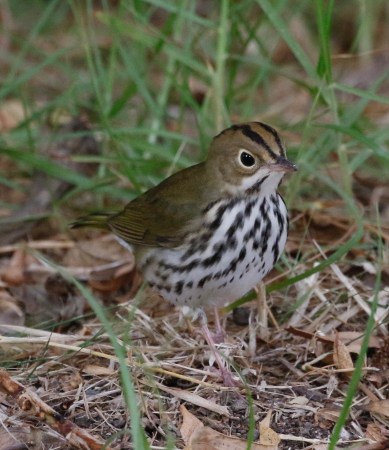
Europeans love their garden birds. In a 2021 survey of 26,000 Europeans, researchers concluded that the presence of a variety of neighborhood birds was just as important for people as financial security.
I get hours of satisfaction in watching the birds come to my tiny shared yard on the Westside of Santa Barbara. Every couple of days, I spread birdseed out on the ground and watch as everything from the diminutive Lincoln’s sparrow to the colossal band-tailed pigeon comes to snack. I used to put the food in hanging feeders, but studies suggest that having birds utilize the same feeder helps spread disease. I have planted native shrubs so that the birds can feel secure and have a place to retreat. Occasionally, a Cooper’s hawk flashes into the yard and takes one of the birds. C’est la vie. It’s all part of nature.
Sometimes I’ll notice that no birds are coming to the yard. A glance out of the window will often reveal a large, apparently well-fed ginger house cat crouched underneath one of the bushes, just waiting for a snack to fly in. All it takes is for me to open the front door a crack, and the cat becomes an orange streak hurtling up and over the fence and away.
We used to house (“own” seems the wrong word for our independent feline friends) two indoor cats. I like cats. I just don’t like what they do. Feral cats have been responsible for the extinction of 62 species of birds and have contributed to the endangered status of hundreds more. It is thought that they kill more than a billion birds annually in the U.S. (some put the figure as high as four billion). A study in Southern Canada found that between 2 percent and 7 percent of wild birds there are killed by cats. More than half of bird species are in decline, and many are in real trouble. There are many reasons for these population crashes, but cats are playing a large role. It’s a problem that most of us don’t want to think about.

Cats are built to kill. They have acute hearing, huge eyes that adjust to the dimmest light, a vertical leap that is five times their own height, and razor-sharp claws that are sheathed for silence. Originally, cats were domesticated to help with controlling rodent populations on farms, but at some point in history, they became human companions. It is largely feral cats that are to blame for the indiscriminate killing of birds — one study claimed that they are responsible for 70 percent of birds’ deaths in this country. Of owned cats, it is thought that only 20 percent are “super hunters,” but nevertheless, these individuals do much damage.
So what is to be done? Some countries have tackled the problem head-on, but not without public outcry. Municipalities in Iceland have banned cats from being out at night, when they are particularly successful at taking birds. In Australia, 844,000 feral cats were killed over a three-year period. Elsewhere, cats have been trapped and neutered before being set free again. These animals will still kill, but at least they won’t be able to reproduce. Cats can become pregnant at four months of age and can breed three times a year; that’s the potential of 150 descendants within two years.
Some cat owners in my neighborhood are obviously aware of the problem. The aforementioned ginger menace that comes into my yard wears a tiny bell on its collar. Research, however, shows that the bell has to be large and loud to be effective — but these are cruel to the cats. There are large, colorful ruffled collars on the market that make successful bird kills 19 times less likely. They also make a cat resemble a court jester.

The best solution is to keep cats indoors or enclosed as all other domestic animals are required to be. A good friend of mine is a lifelong birder, and he’s also crazy about cats. He used to believe that cats needed to be given regular access to the great outdoors to be content, but he’s changed his mind over the years. He now has four indoor cats that, by all accounts, are happy and well-adjusted. The key, he says, is for the cats to have companions and a stimulating environment. There are several benefits to keeping cats indoors, one being that they live, on average, four times longer than outdoor cats. On my neighborhood walks, I’m always seeing flyers on telephone poles depicting missing cats, many of which have likely become a coyote snack.
If you cannot keep your cat inside during the day, it is critically important to do so at night. Bird nesting season is just around the corner, and in a study it was found that 94 percent of nest predation by cats occurs at night. Cats will eat both the eggs and the nestlings. Many of these predated nests were high in trees.
Cat ownership seems like it’s relatively easy because of the independent nature of cats, but if you think about the ramifications of an outdoor cat’s effect upon the environment, there is much to consider if you wish to be a responsible owner. Or get a dog.




You must be logged in to post a comment.